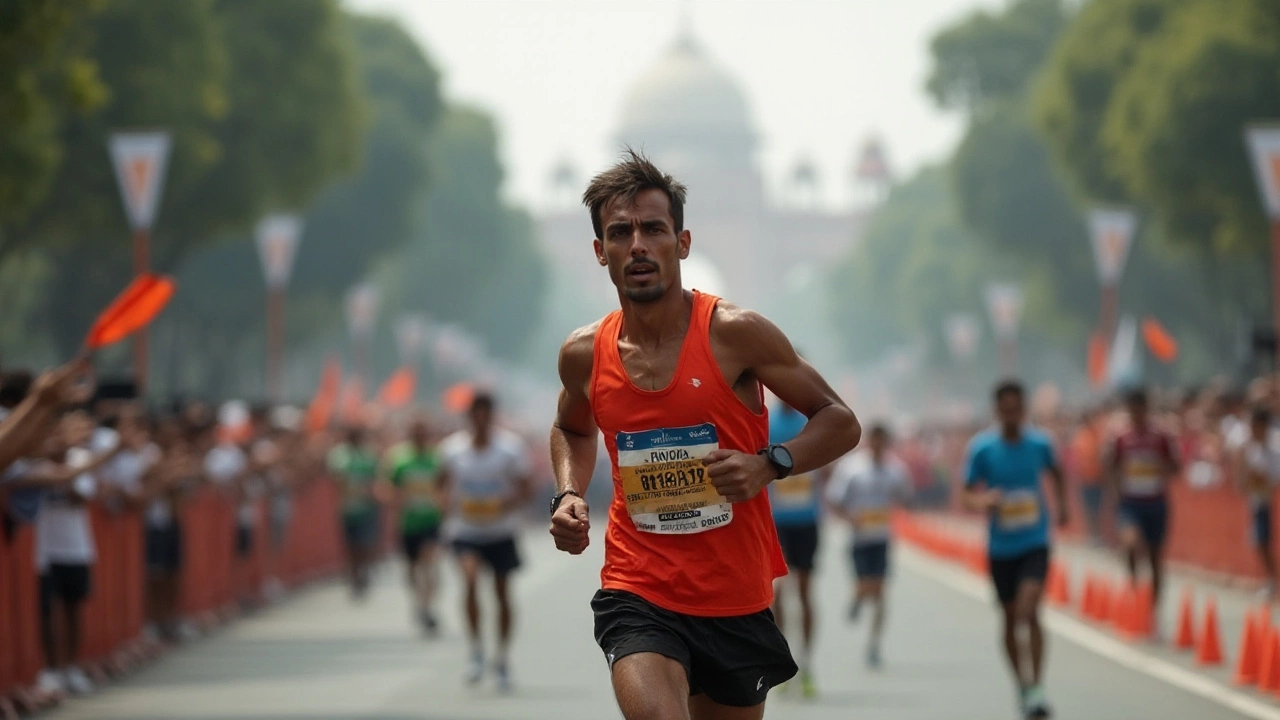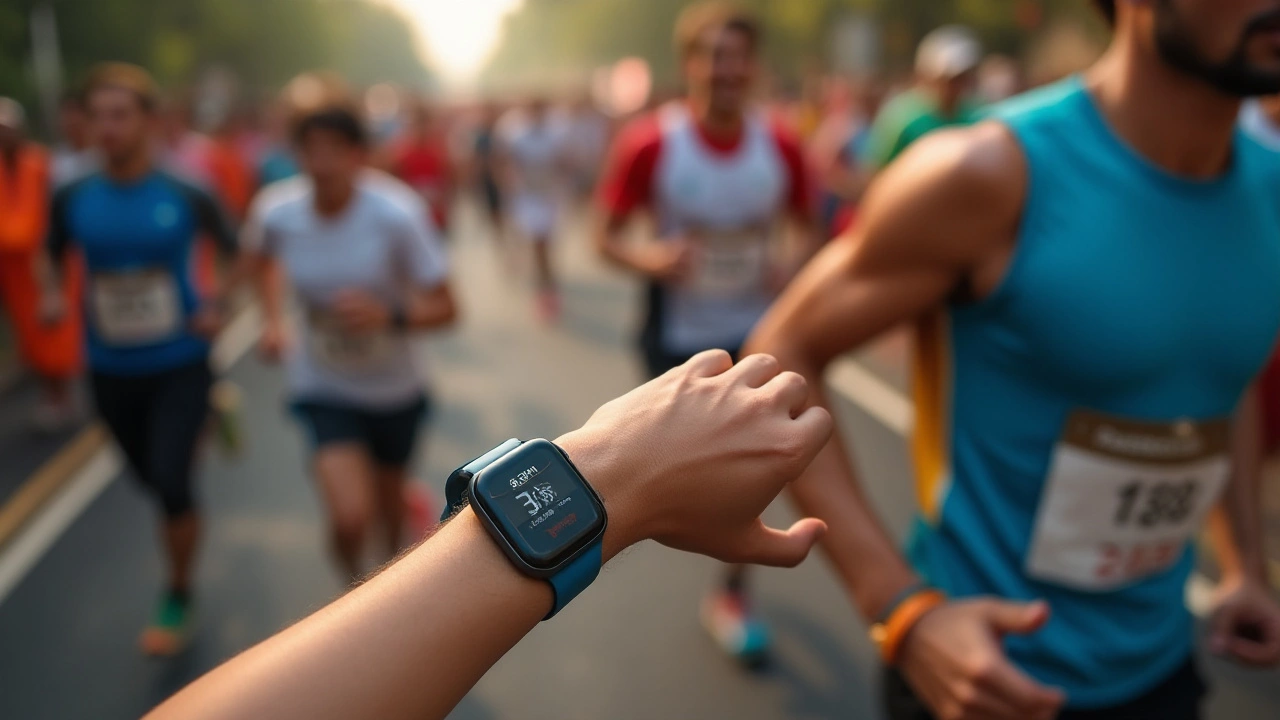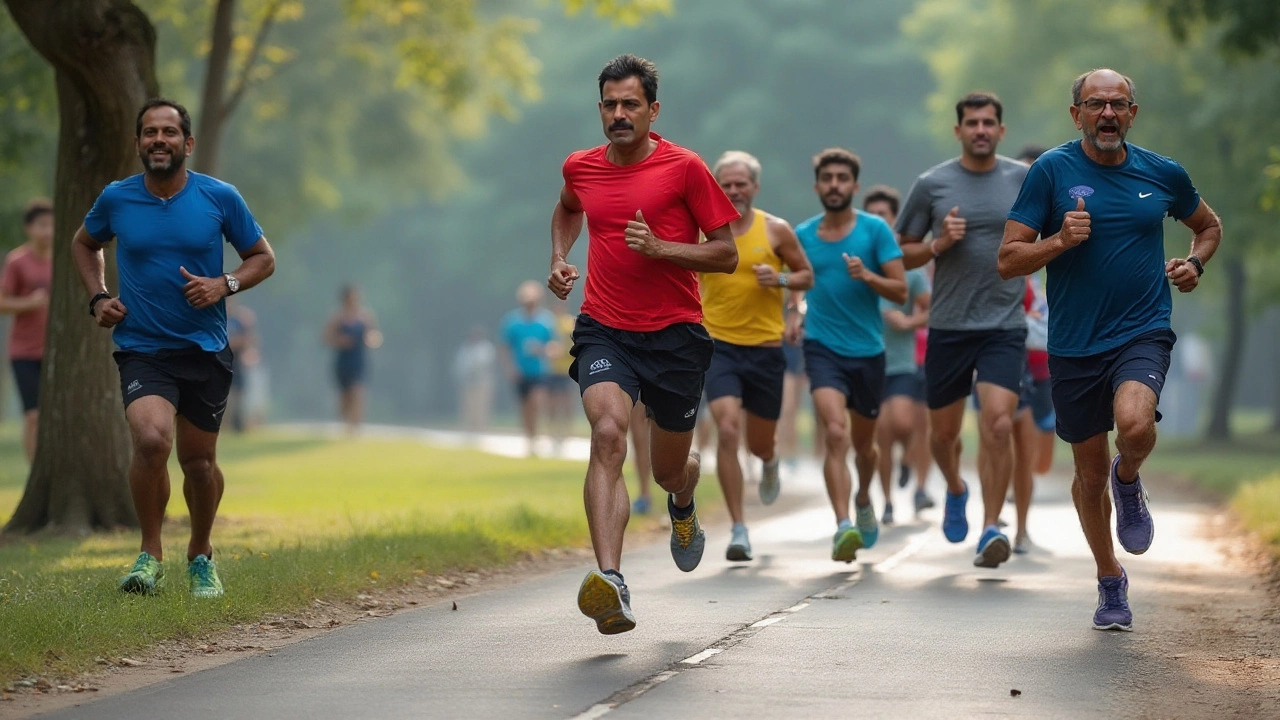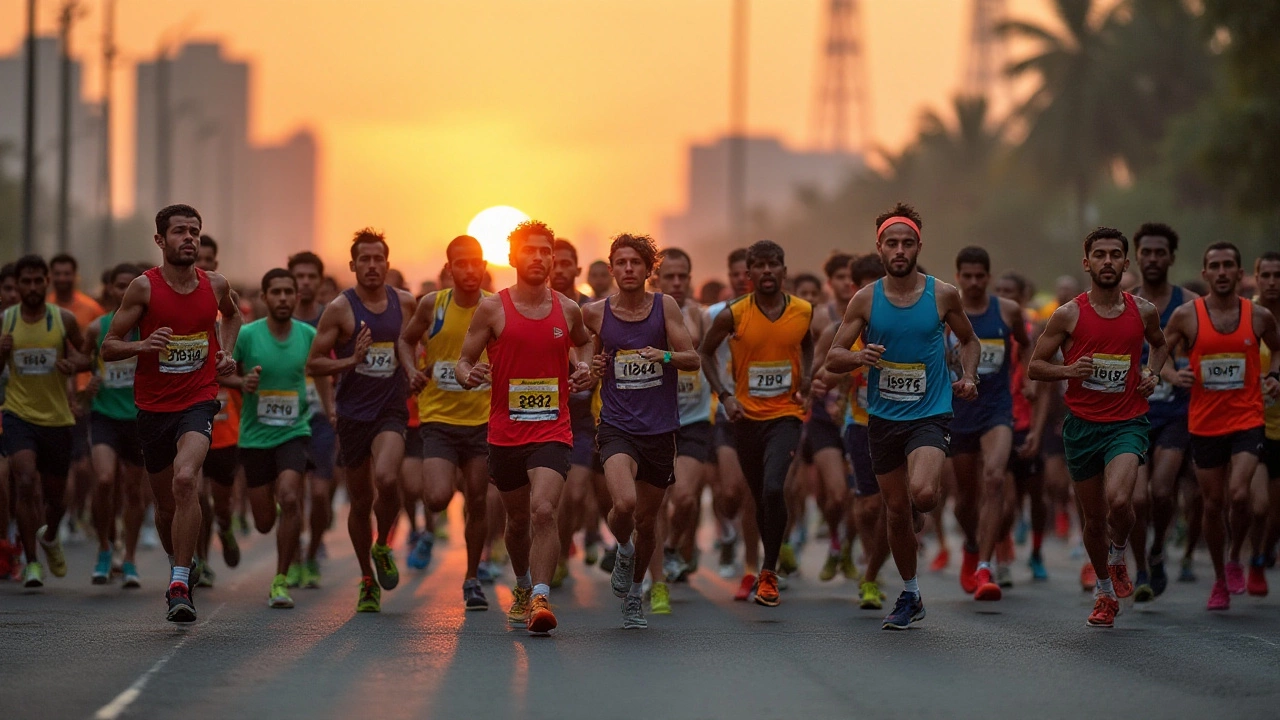Running a marathon is a feat that many aspire to achieve, but the pace at which people complete this distance can vary wildly. Understanding what is considered an average marathon pace can be a helpful starting point for anyone training for the challenge. Knowing this can assist runners in setting realistic goals that match their abilities and aspirations. From the spirited jogger attempting their first marathon to a more dedicated runner aiming for a personal best, being aware of typical finishing times offers valuable direction.
The concept of average marathon pace is not just a simple time measurement, as it encapsulates various elements such as the runner's experience, the specific marathon course, environmental conditions, and even the runner's day-to-day health. With insights into past averages and influencing factors, along with actionable tips for improvement, this article aims to provide runners with a roadmap to understanding and enhancing their marathon performance.
- Understanding Average Marathon Paces
- Factors Influencing Marathon Pace
- Historical Marathon Finish Times
- Tips for Improving Your Marathon Pace
Understanding Average Marathon Paces
Running a marathon represents a monumental achievement for athletes and recreational runners alike, and understanding what constitutes an average pace is fundamental for any participant. The benchmark for average marathon paces varies, with factors like age, gender, and running experience playing pivotal roles. Historically, the average marathon time for men hovers around 4 hours and 30 minutes, while women tend to finish closer to the 4 hours and 45 minutes mark. These are rough estimates, of course, and individual performances may differ hugely. According to a 2019 study by RunRepeat, the average marathons have been clocking slightly slower times than in earlier years, indicating a broader appeal and participation across varying fitness levels.
Breaking down the mechanics of average marathon pace helps prospective marathoners set realistic expectations. To calculate your pace, divide the marathon's 42.195 kilometers or 26.2 miles by the time it takes you to finish, giving you a pace per kilometer or mile. For many, hitting a steady stride of 10 minutes per mile, which equates to an approximate pace of 6 minutes and 12 seconds per kilometer, can be a gratifying goal that balances endurance and comfort. It's essential to remember that maintaining an average pace doesn't necessarily mean pushing beyond your limits; rather, it should cater to maintaining stamina throughout the race. A disciplined approach to pacing not only helps avoid the dreaded 'hitting the wall' phenomenon but also leads to a stronger finish.
Marathon training inherently involves understanding your unique physiology. Factors such as acclimation to weather, nutrition in the days leading up to the race, hydration strategies, and mental preparation all play essential roles. Proper training regimes typically encompass long runs, speed workouts, and rest days that each contribute to building resilience. As renowned marathoner Hal Higdon notes, "Training for a marathon is like studying for an exam; you invest weeks and months into preparation to ultimately perform well on a single day."
"Most people run a marathon with one goal in mind: finishing. Those who set out to break records are few and far between. For the majority, the victory comes in crossing the finish line, not in the stopwatch," – Jeff Galloway, former Olympian and renowned running coach.
Knowing the average marathon pace helps participants adjust their expectations according to specific races. Factors such as altitude, track surface, and the time of year can shift what might be considered achievable. Often, races in temperate climates with flat courses yield faster times, while more challenging conditions may necessitate a slower pace to cross the finish line successfully. By studying different races' average times and incorporating versatile training routines, runners can better optimize their performance to meet or exceed their personal aims. Ultimately, understanding average pace becomes a tool that empowers runners to challenge themselves responsibly, safely, and enjoyably.
An interesting trend in modern marathon participation is the diversification of runner profiles. Today's runners include varied age groups and backgrounds, which reflects on average pace assessments with broader datasets. Inclusion of positive bodily health practices and community engagement, alongside targeted training, contribute to this rising diversity in capabilities and experiences. By celebrating the essence of commitment over speed, marathons unite people through an appreciation of endurance over individual prowess.

Factors Influencing Marathon Pace
Determining a runner's marathon pace is more than just measuring time against distance. It's an art that combines an understanding of personal fitness, external conditions, and even psychological fortitude. One significant factor is the runner's level of experience. A seasoned marathon runner likely has honed their strategy over many races, allowing them to set and maintain a consistent pace. In contrast, newcomers may still be learning to manage their energy effectively, which can lead to uneven pacing as they navigate the course.
Weather conditions also play a crucial role in determining marathon pace. Running in cool, dry weather is ideal for most, as extreme temperatures can quickly deplete energy reserves, forcing a runner to slow down. Marathon courses themselves vary, with some offering flat, forgiving terrain, while others have rolling hills that can challenge even the most prepared athletes, causing variations in pace. Time of day and altitude may also influence how a runner performs, with many finding morning or late afternoon races more manageable.
Psychological factors, such as stress and motivation, cannot be underestimated either. The mental determination to complete a marathon can push some to achieve a faster pace than their training times might suggest. Conversely, the overwhelming nature of a marathon can lead to anxiety, which might slow a runner down. Nutrition is equally important as the fuel consumed in the days leading up to the race, as well as race-day hydration and snack choices, can make or break a runner’s pace. Each element of the marathon experience provides a piece of the puzzle, contributing to how fast or slow a marathon is run.
A runner's intrinsic physiological makeup, including their VO2 max, which measures the maximum amount of oxygen they can utilize during intense exercise, is also a key determinant of marathon pace. Higher VO2 max allows for better endurance and speed. Regular training aims to improve this metric, thus enhancing endurance. Alongside VO2 max, lactate threshold, or the point at which lactic acid starts to build up in the bloodstream, informs how long a runner can sustain a certain intensity. Both these physiological markers are used by runners and coaches to tailor training and predict marathon performance.
According to an ESPN report, Parkrun founder Paul Sinton-Hewitt once highlighted that "pace is personal, and each runner must tune into their own rhythm." This underscores the diversity of factors that make up each runner’s unique situation. Additionally, as running technology improves, wearable devices now provide runners with unprecedented insights into their pacing patterns, enabling adjustments on the fly. Incorporating tech-savvy tools into training regimens can help runners make smarter decisions about their energy expenditure during the marathon.

Historical Marathon Finish Times
For those fascinated by the ebb and flow of marathon history, examining historical marathon finish times provides a window into the evolution of this enduring sport. The tale begins in a world far removed from today's sophisticated marathon training methods, marked by elements such as minimal gear and landscapes untouched by modern infrastructure. In the ancient world of the 490 BC Battle of Marathon, the story was of a lone runner, Pheidippides, who sprinted from Marathon to Athens in a run that would become legendary. His effort, though mythical and not chronometrically documented, laid the groundwork for what we now celebrate as the marathon.
In the modern era, the establishment of the marathon as a competitive event in the late 19th century began setting time records that runners would strive to beat. The 1904 Olympic marathon was a saga of its own in St. Louis; athletes faced trying conditions that produced unexpectedly long times. The winner, Thomas Hicks, clocked in at 3 hours and 28 minutes, a time that reflects both the evolution of athletic training and the challenges inherent to the sport's infancy. As training technologies, nutrition insights, and running strategies evolved, marathon times continued to plummet, illustrating human resilience and determination.
By the 1950s and 60s, marathon running had established itself internationally, with record times being pushed further down. In 1954, Jim Peters set a formidable record of 2 hours, 17 minutes, and 39 seconds in Turku, a time that stood as a beacon of what could be achieved. Decades later, the boundaries were again shattered when Eliud Kipchoge made an indelible mark with a remarkable, albeit unofficial, sub-two-hour marathon in 2019. This achievement underscored the potential of human endurance and sparked ongoing discussions about just how low marathon times might go.
Throughout the years, the average marathon pace for amateur runners has generally ranged from 4 to 5 hours, depending largely on individual factors like training regimes and physical conditions. This marked variance in times showcases the accessibility of the marathon to individuals with varied aspirations and capabilities. In a fascinating juxtaposition, the stories of amateur runners crossing the finish line during sunset complements the swift exploits of elite athletes who challenge the dawn. As technology becomes ever more integrated into running tips, with wearables providing data-driven insights, it's intriguing to ponder how technology will continue shaping the future of average marathon finish times.
The famed runner Frank Shorter once remarked, "You have to forget your last marathon before you try another. Your mind can't know what's coming." His words offer a vivid reminder of the nuances of courage and mental determination required to undertake and potentially improve one's own marathon finish time.

Tips for Improving Your Marathon Pace
Tackling a marathon is as much about strategy as it is about stamina. To improve your marathon pace, it’s crucial to focus on a variety of elements that go beyond simply logging miles. First and foremost, consistency in training cannot be overstated. Marathon training relies heavily on a balanced schedule that includes long runs, speed work, and rest days. Building endurance through long runs once a week is a common practice, but these runs should be mixed with interval training, which focuses on short bursts of speed followed by recovery periods. These intervals help increase not only speed but also overall cardiovascular capacity.
Nutrition, too, plays a critical role in how one executes their race speed. Consuming a balanced diet rich in carbohydrates, proteins, and healthy fats supports enduring energy release, muscle repair, and recovery. Carbohydrate loading before a long run or race can fuel your energy stores, while hydration strategies ensure that electrolytes are maintained throughout the run. Some seasoned runners swear by adding beet juice to their routine; it's known to enhance blood flow and improve stamina. Marathon finish time can be significantly influenced by what you eat, and monitoring your nutrition closely can yield valuable dividends on race day.
Implementing strength training into your routine is often overlooked but is highly beneficial. This should include not only lower-body exercises such as squats and lunges but also core strengthening. A strong core reduces fatigue and maintains better posture through the latter stages of the marathon when the body is most vulnerable. Runners might also want to consider yoga or pilates, which focus on flexibility and core strength, thereby helping to prevent injuries and improve race efficiency.
"To keep from decaying, to be a winner, the athlete must accept pain—not only accept it, but look for it, live with it, learn not to fear it," once stated Dr. George Sheehan, renowned cardiologist and runner.
Rest and recovery are just as important as the running itself. Incorporating days of complete rest or active recovery—such as a gentle swim or leisurely walk—gives your body the chance to repair, adapt, and get stronger. Neglecting this aspect can lead to exhaustion or injury, which of course, are setbacks in your training journey. Monitoring your sleep patterns and ensuring quality rest each night can greatly improve your overall performance in the long-term.
Lastly, embracing mental training can greatly influence your marathon performance. Visualization techniques, where you mentally run through the race, imagine scenarios, and plan solutions, can prepare you not only physically but mentally. Engaging in regular sessions that involve deep breathing, meditation, or even speaking with a sports psychologist can help build resilience. Many elite athletes often emphasize the mental component of running, aligning mindsets with physical outputs to enhance their marathon training experience.
